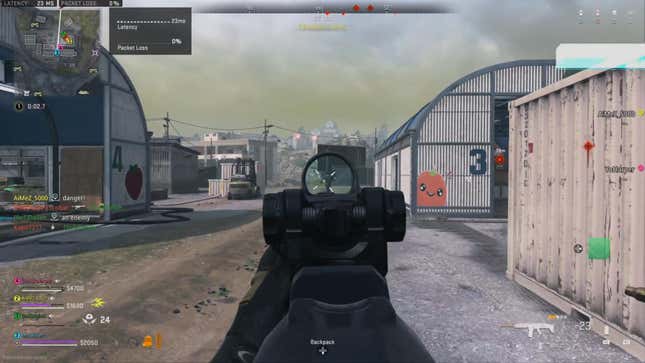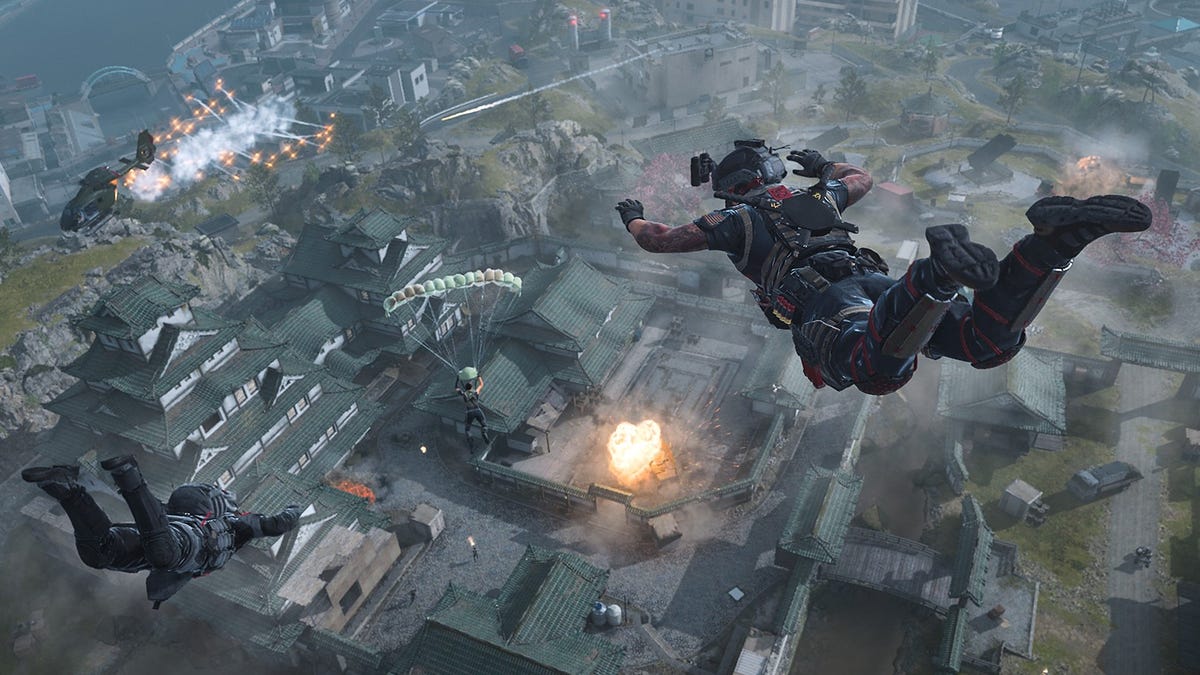Since its release in November 2022, Call of Duty: Warzone 2.0 has undergone immense scrutiny from the community due to its rocky launch. Warzone 2.0 dropped with numerous missing features that undid a lot of the goodwill garnered during the first game’s lifecycle, and while it still has a long way to go, it’s headed in the right direction, thanks in part to the recently released Ashika Island map.
This small-scale Resurgence map doesn’t fix all of the game’s issues, but it certainly brought me—and many other lapsed fans—back to the battle royale, thanks to its more focused, faster-paced experience. There are many reasons the map works so well, but it mainly comes down to its design, along with the Resurgence mode featured on it, which makes the most of its smaller scale and tighter spaces by removing a lot of the downtime typically present on larger maps. This makes each match feel balanced and digestible, especially when compared to Al Mazrah, the main Warzone 2.0 battle royale map.
Al Mazrah is fine. It’s not horrible, but it has a litany of problems that are exacerbated by some of the flawed gameplay design choices—like lots of open spaces in between POIs that leave players wide open for attacks while rotating. Likewise, the map itself feels too big for the limited 150-player count, which leads to far too much downtime. When combined with the game’s slow movement, this practically guarantees you’ll go several minutes at a time without any enemy engagements.
Ashika Island, on the other hand, offers way more cover between POIs—whether in the form of small buildings, rocky terrain, or objects to hide behind. It encourages movement and pushes matches closer to the fast pacing the series is known for. There’s never a dull moment on Ashika Island since its player count is just right for the map size, which keeps engagements flowing at a consistent rate.
Ashika Island’s impeccable design

Speaking of POIs, each main hub on Ashika Island is a blast, from the condensed Residential area, to the multistoried Tsuki Castle, and even the close-quarters Oganikku Farms. Activision and High Moon Studios did an incredible job of creating POIs that are all fun to explore and battle it out against enemies in, without feeling repetitive. Ashika Island has something for everyone, whether you’re someone who prefers to take it slowly, or an expert player who likes to finesse and use the environment to your advantage.
The underground area full of water is also a nice touch, giving players another way to rotate away from potential hot zones. Those who are less experienced can just hang out in the underground area, which is usually not well-trafficked. This gives newcomers a chance to get their bearings and survive, even against more experienced players.
Likewise, Ashika Island doesn’t have choke points or overly advantageous positions like other maps. One of the biggest issues with the original Warzone is that certain spots like Prison from Rebirth Island and Peak on Caldera were right in the middle of the map and gave players a distinct height advantage. So, other POIs felt less desirable to take over, especially since they were often on the outskirts of the map. That’s why Ashika Island works so well: there’s no obvious power position that works better than others. Sure, certain POIs are slightly more ideal depending on the zone movement and your play style, but overall, Ashika Island’s layout is well-balanced.
One of the best areas is the set of apartment buildings to the southeast of Oganikku Farms. There are two tall buildings here, each comprised of several floors, all of which can be reached from the opposite building across. This gives players multiple access points, rewarding those who like to outsmart their opponents. One of my favorite gameplay moments involved flying a helicopter toward a team, using it to distract the enemy players, and then jumping out before taking out multiple foes in one fluid motion. Outmaneuvering an opponent is Warzone at its best, and it’s all thanks to Ashika Island’s fantastic design.
Back in the action, soldier

Beyond the map’s design itself, I cannot praise the Resurgence mode enough. By default, battle royales on traditional large maps can be tough to get into since it often takes upwards of 30 minutes to finish a match. You typically spend more time looting and preparing for battle than you do actually fighting against other players, which gets old after a while.
But Resurgence throws that out the window; instead taking place on a smaller map with a max of 52 players (as opposed to around 150 on Al Mazrah). More importantly, it allows players to continuously respawn as long as at least one teammate remains alive, offering plenty of chances to get back into the action.
What this means is that you’re not penalized as much for playing aggressively, resulting in hard-hitting and fun matches that are easy to pick up and play—even if you’re getting your ass kicked. It’s easy to get caught in the “one more match” loop when Resurgence games last between 12 and 15 minutes, and it’s less likely that you’ll give up in frustration when you know you can drop in, get in a firefight, and get back in faster than you can find a weapon in the traditional battle royale. While Warzone’s gameplay itself still needs a little work—like implementing a slower time to kill, and faster animations across the board—getting back into the action so quickly almost makes up for some of its fundamental gameplay flaws.
Ashika Island’s excellent design, along with the faster-paced, less punishing Resurgence gameplay, equates to an immensely fun experience that feels much more like Call of Duty than the traditional BR mode. It’s swift and intense, with plenty of variation that keeps me interested for lengthy game sessions broken up into short bursts. It gets to the point faster and is ideal for players who don’t have hours upon hours to devote, offering the same thrills as a typical battle royale but in a fraction of the time. Sure, Warzone 2.0 has plenty of room for improvement, but Ashika Island makes me confident the game will eventually reach the highs of its predecessor.







